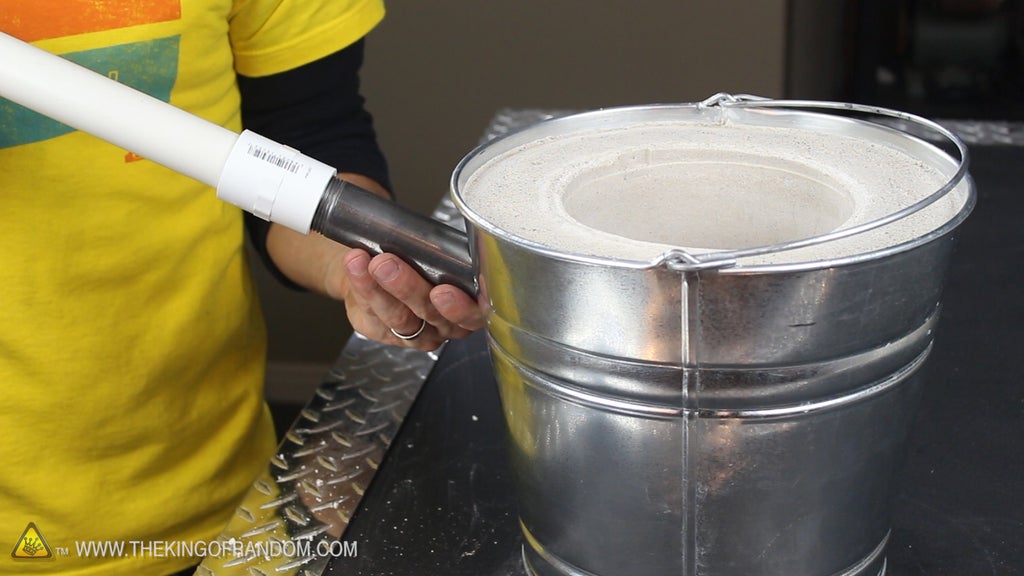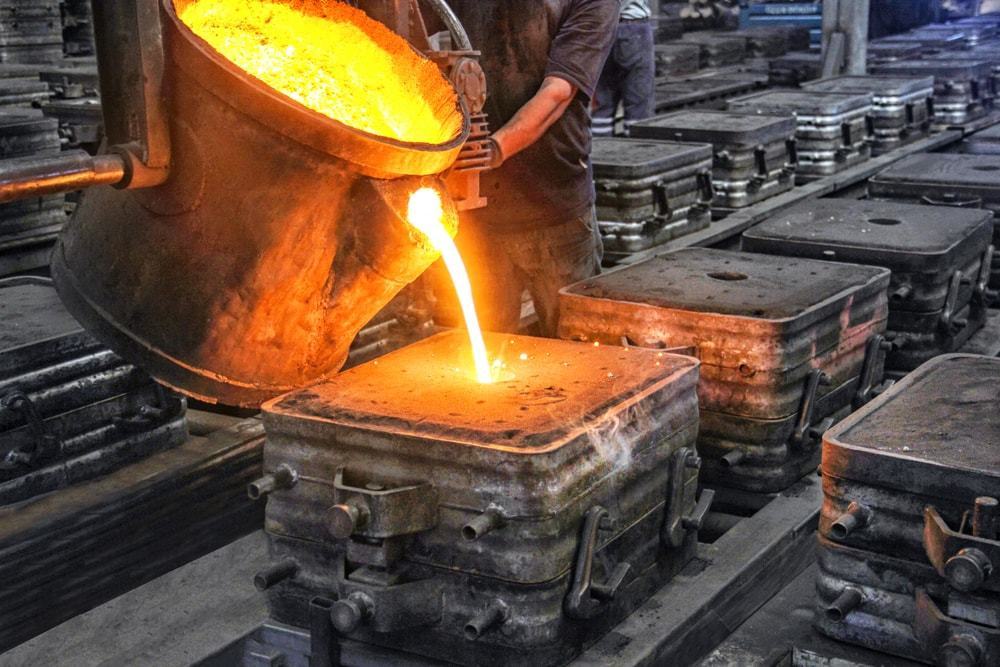Discover the Ingenious Strategies Utilized in a Metal Foundry for Superior Casting Results
In today's competitive production landscape, metal foundries are increasingly adopting ingenious techniques to enhance casting outcomes - Aluminum Foundry. Advanced computer system simulations permit specific modeling of liquified metal habits, while 3D printing enables fast manufacturing of complex mold and mildews. Furthermore, environmentally friendly products and automation streamline operations. These growths promise substantial improvements in effectiveness and quality assurance. Nevertheless, the influence of these technologies on sustainability and manufacturing practices stays to be totally checked out
Advanced Computer System Simulations in Metal Casting
Advanced computer simulations have transformed the metal casting process by enhancing accuracy and performance. These sophisticated tools permit designers to produce online models of cast components, enabling them to analyze and forecast the actions of molten metal during the casting phase. By imitating various parameters such as temperature level, flow rate, and air conditioning rates, makers can determine possible problems prior to physical manufacturing starts.
This aggressive approach lowers waste and reduces expensive mistakes, ultimately causing improved product high quality. In addition, simulations promote the optimization of mold layouts, making sure that they satisfy the specific demands of each job. The assimilation of computational fluid characteristics (CFD) and limited aspect analysis (FEA) additional contributes to the precision of these simulations, providing understandings that were previously unattainable. As a result, advanced computer system simulations have come to be an indispensable part of modern-day metal foundries, greatly advancing the industry's abilities.
3D Printing for Molds and Patterns
3D printing has arised as a groundbreaking method for developing molds and patterns in the metal foundry market. This technology makes it possible for the rapid production of complex geometries that traditional production approaches struggle to accomplish. By utilizing additive manufacturing, foundries can produce detailed designs with minimized preparations and material waste. The capacity to create molds as needed allows for higher adaptability in design iterations, assisting in faster prototyping and alterations.
3D printing can use a variety of materials, consisting of metals and plastics, tailored to certain casting needs. This flexibility enhances the precision of mold and mildews, resulting in premium spreading outcomes with boosted surface coatings. Furthermore, the reduction in the number of components required simplifies setting up processes, additionally enhancing production effectiveness. As foundries continue to take on 3D printing, they are poised to redefine sector criteria, leading the means for technology and boosted productivity in metal casting operations.
Eco-Friendly Materials and Processes
As the metal foundry industry encounters raising pressure to reduce its ecological footprint, the fostering of eco-friendly materials and processes has become essential. Foundries are currently checking out sustainable alternatives to conventional materials, such as making use of bio-based binders and recycled metals. These products not just lessen waste however also reduced energy consumption during production.
Additionally, advancements in sand spreading methods have actually resulted in the use of artificial sands that are much less harmful to the atmosphere. Foundries are likewise executing cutting-edge processes like liquified metal treatment that reduces exhausts and boosts the top quality of actors items.
Additionally, water-based finishings have replaced poisonous solvents, promoting a more secure workplace (Aluminum Foundry). By integrating these green techniques, metal foundries can markedly reduce their eco-friendly effect while keeping top notch spreading results. This shift not just benefits the atmosphere yet also lines up with the expanding customer demand for lasting manufacturing options
Automation and Robotics in Foundry Procedures
While the metal foundry industry accepts technology, the integration of automation and robotics is transforming procedures greatly. Automated systems streamline processes such as mold production, metal putting, and casting finishing, considerably boosting performance. Robotics facilitate the handling of heavy materials, minimizing the risk of work environment injuries and making sure safer atmospheres.

Additionally, the use of automated guided cars (AGVs) optimizes product transport within centers, making sure timely delivery of elements to suitable workstations. By carrying out these innovations, foundries can adapt to changing needs with higher dexterity, ultimately resulting in boosted earnings and competition on the market. As automation and robotics continue to evolve, they hold the advice potential to redefine conventional foundry techniques and drive further improvements in casting techniques.
Real-Time Surveillance and High Quality Control Techniques
The improvements in automation and robotics have actually paved the way for much more advanced approaches to quality assurance in metal foundries. Real-time monitoring systems utilize advanced sensors and information analytics to track important specifications throughout the casting procedure. These systems continually evaluate variables such as material, temperature, and pressure structure, making it possible for immediate detection of variances from developed criteria.
Quality assurance techniques now incorporate artificial intelligence formulas that analyze historic information to anticipate potential defects prior to they occur. This positive technique minimizes waste and enhances overall production efficiency. Additionally, integrated feedback loops enable fast modifications, making sure that each spreading satisfies rigid top quality needs.
The execution of electronic doubles-- online reproductions of physical assets-- has also revolutionized quality guarantee, permitting designers to imitate and maximize processes in real-time. With each other, these ingenious techniques considerably improve the dependability and quality of spreadings, establishing new industry standards in metal foundry procedures.
Often Asked Concerns
What Kinds of Metals Are Generally Cast in Foundries?
Commonly cast metals in foundries include light weight aluminum, iron, bronze, and brass. Each metal displays distinct properties, making them suitable for numerous applications, such as automotive parts, equipment, and creative sculptures, boosting their convenience in manufacturing.

How Lengthy Does the Casting Process Typically Take?
The casting procedure typically takes a number of hours to days, relying on elements such as the intricacy of the mold, sort of metal made use of, and cooling demands. Each stage affects the total duration substantially.
What Security Procedures Remain In Place for Foundry Workers?

How Are Flaws in Castings Identified and Addressed?
Flaws in castings are determined through visual examinations and non-destructive testing techniques. Once spotted, foundry workers resolve them by fine-tuning processes, adjusting product make-ups, and carrying out corrective measures to assure quality and compliance with requirements.
What Is the Cost Variety for Metal Casting Providers?
The cost variety for metal casting solutions commonly ranges $1 to $10 per pound, depending on variables such as material kind, intricacy of the style, and production quantity, impacting total prices substantially.
In today's competitive manufacturing landscape, metal foundries are significantly taking on cutting-edge methods to enhance spreading outcomes. As the metal foundry market faces raising pressure to lower its environmental impact, the adoption of environment-friendly materials and procedures has actually become essential. Foundries are currently discovering lasting options to conventional products, such as using bio-based binders and recycled steels. By integrating these green techniques, metal foundries can noticeably decrease their environmental influence while maintaining high-grade casting outcomes. The developments in automation and robotics have actually led the way for a lot more innovative methods to high quality assurance in metal foundries.